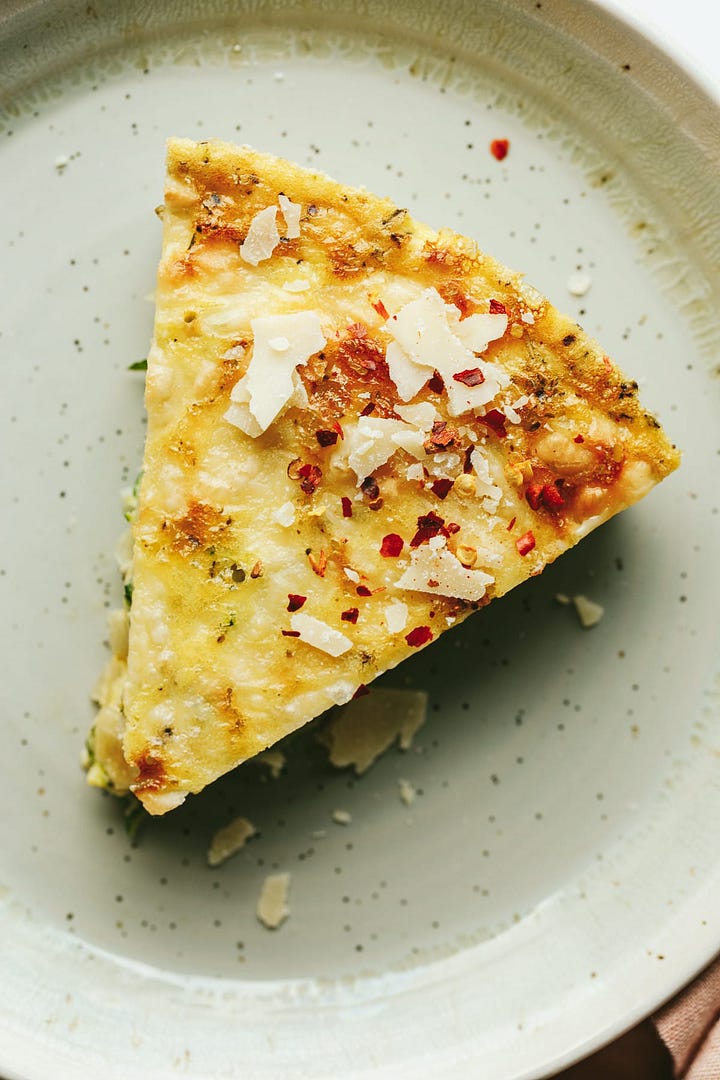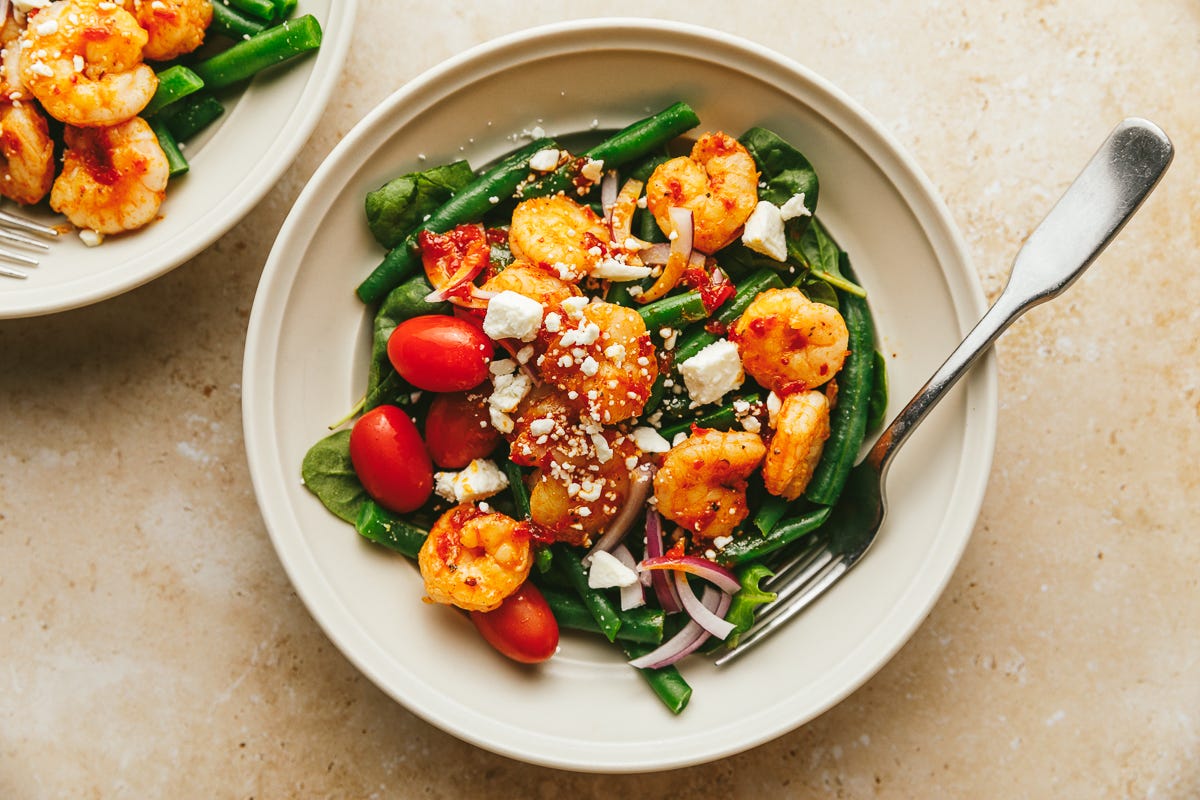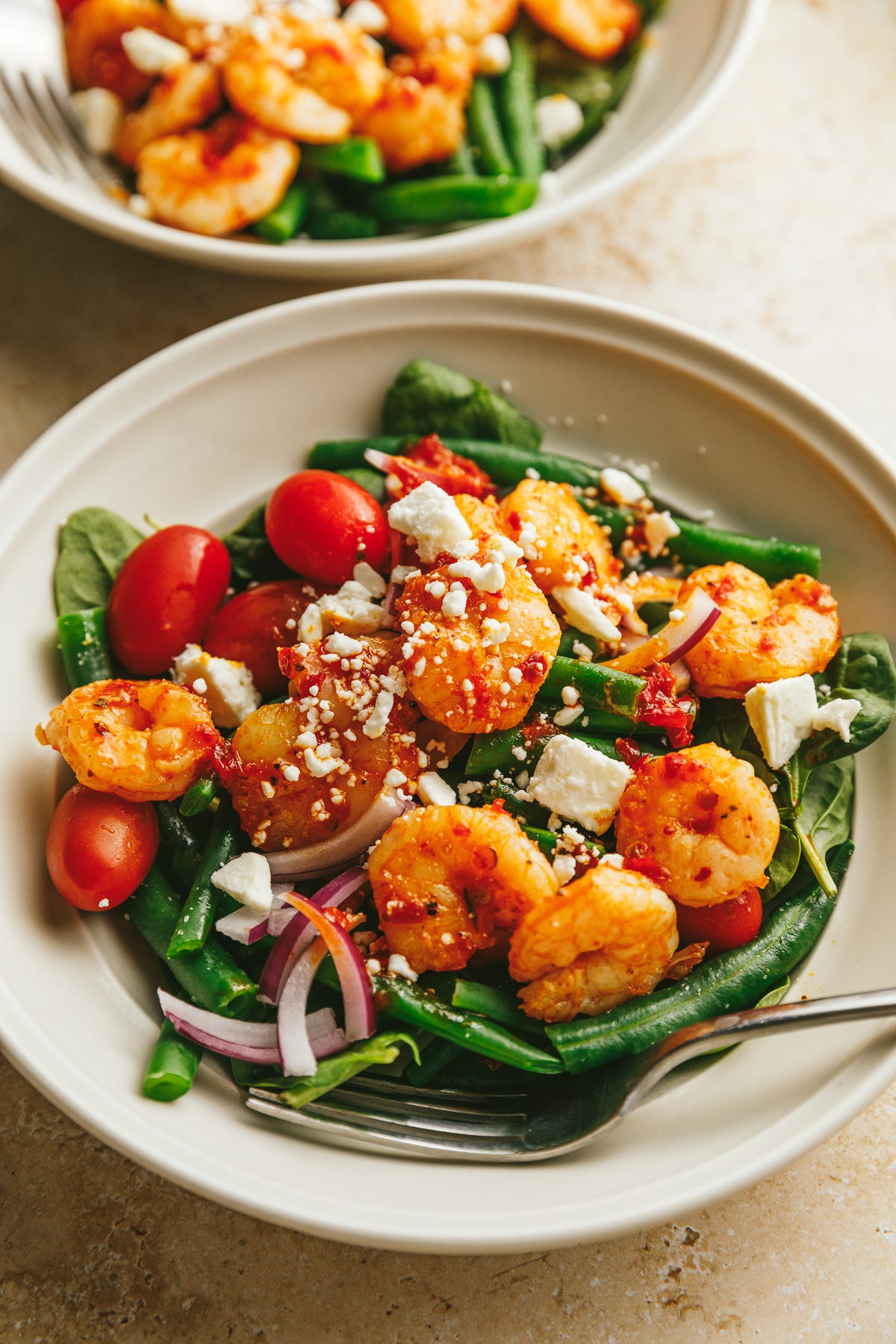Hi, I hope your week is going well! My kids don’t have school on Fridays so Thursdays are always a bit of a sigh of relief for me, it’s our “Friday” of the week. And I’m so glad it’s here.
I have a ridiculously easy harissa shrimp and green bean bowl to share with you. You could whip it up in 20 minutes— perhaps even 15 if you’re speedy— and it has bold, spicy flavor that you can adjust to your own taste.
First, if you missed last week’s newsletter, I shared a recipe for mushroom/sausage/kale “risotto” made with a mix of cauliflower rice and lupini rice!
There’s also a free, week-long meal plan in there (with a shopping list). If you’re following the plan this week, I’d love to know what you think of it.
Let’s talk about labels…
I was recently chatting with a fellow recipe developer (who is also a nutritionist) and we got to talking about diet labels (as in, categorizing our eating styles into “keto” or “paleo”, not nutritional labels). We are all familiar with them. I use them daily in my blog and here in my newsletter to help readers know what to expect.
If you try to stick to low-carb or keto or gluten-free eating, you know that a keto turkey meatloaf is more likely to suit your eating style than a more traditional turkey meatloaf. You’re more likely to search that in Google, and that’s where, perhaps you’ll find my recipe (or another great recipe from a different low-carb site).
But we all know that diet labels can feel limiting, restrictive, and box us into a certain way that we think we should eat. I feel this, especially as someone who creates low-carb and keto recipes to share with others.
Sometimes, diet labels can be a detriment to our health. Case in point, food labeling and product marketing. Just because something is labeled keto or low-carb or gluten-free does not make it nutritious or even worth consuming.
I realize that many of us are already aware of this, but it has been on my mind lately, especially as I occasionally pop into various Facebook groups I belong to (there are the food blogging groups, the brain cancer /caregiver groups, the low-carb/ketogenic diet groups, the mom groups, etc.). I notice similar themes, like comments on what’s “allowed” and what isn’t or what’s healthy and what isn’t. It can be hard to filter out the noise.
We love niches. We love labels. We tend to fall into certain camps. Are you part of the eat-this-not-that-camp? Or the crunchy-mom camp? Or the keto for cancer camp? (Hi, apparently I belong to all three 👋🏼).
We crave community, and that’s a good thing. We want to bond with likeminded people, learn new ideas, and even commiserate together, whether it’s about heavy things, like a scary diagnosis, or everyday things, like what to eat for breakfast when bagels are — quite literally— off the table.


But being part of that community goes hand-in-hand with weeding through the noise about diet labels, like certain expectations, assumptions, and misinformation.
Everyone has an idea of what keto looks like, but did you know that there are many variations that center around the classic keto diet, including intermittent fasting and low glycemic eating?
When Ian was first diagnosed with brain cancer, we got a lot of pushback and questioning around our decision to try out a ketogenic diet (alongside conventional treatment), despite the fact that it is a safe, well-researched and well-tolerated adjunctive therapy that has particular success with some neurological disorders.
We had well-meaning people in our lives (including those in the medical community) tell us that it would do no good, that it would be a waste of time and effort, that he would lose too much weight, and why shouldn’t he just be allowed to enjoy the foods he likes while he still can? Why deprive him of joy?
Apparently to some, a ketogenic diet is considered to be “too extreme,” even when you are facing a terminal illness.
That was seven years ago.
We will never really know how much we can attribute Ian’s stable MRIs to diet or to other integrative treatment/therapies, or to repurposed drugs, (really, it’s all God), but why wouldn’t diet also play a crucial role in healing?
What really happened is that Ian’s switch to a ketogenic diet made whole foods the focus of our meals. It transformed his health and, in my opinion, changed the health trajectory of our entire family.
Today, my low-carb eating might look very different than yours. Ian’s ketogenic-friendly meals look very different than mine. Both of our plates are often different than our kids.’ My healthy Tuesday dinner is usually very different than my Sunday-Funday brunch with a friend.
So, let’s not get boxed in. It’s okay to belong to a particular camp, only 80 percent of the time. Or 70 percent. Or whatever percent you need that to be to make small gains for your own health. It doesn’t have to be all-or-nothing— that mindset is part of the reason why a particular diet (diet as in, what we eat, and not associated with weight loss), can feel really restrictive and discouraging at times.
Let’s focus on what’s sustainable. I hope my real-food recipes serve you, right where you are. Maybe they’ll inspire you to eat seasonally, or they’ll offer a healthier, low-glycemic alternative to a sweet treat you love. Or maybe a week-long meal plan will simply make dinner prep less of a burden and make healthy eating actually doable on a weeknight.
And yes, sometimes often, there will be labels. Mostly to differentiate what sets my recipes apart from others out there. (But also because this low-carb niche and community is just the best camp to be in. 😉)
Super quick, sweet and spicy harissa shrimp and green bean bowls
You know the best part about cooking, when you can just create with what you have on hand and not fuss over an actual recipe? This week’s meal came together just like that.
Shrimp is quick and easy. I like to buy the bags of frozen, wild-caught shrimp from Costco, and it always seems to save me on busy nights when I don’t have anything defrosted.
Frozen shrimp will defrost in just a few minutes if you place them in a colander and run tap water over them, gently tossing them every minute or so.
Harissa, an African condiment with a bold, spicy kick, is also an ingredient I always have on hand. Add a bit of harissa to chicken or roasted vegetables or even to a salad dressing for a punch of heat.
For this dish, you’ll cook the shrimp on the stovetop, then make a sweet and spicy harissa sauce that coats the shrimp and turns into a quick vinaigrette for drizzling.
Below is the recipe, printable PDF and nutritional info for paid subscribers. ENJOY! And have a wonderful rest of your week.
Abby
Keep reading with a 7-day free trial
Subscribe to At the Table to keep reading this post and get 7 days of free access to the full post archives.






